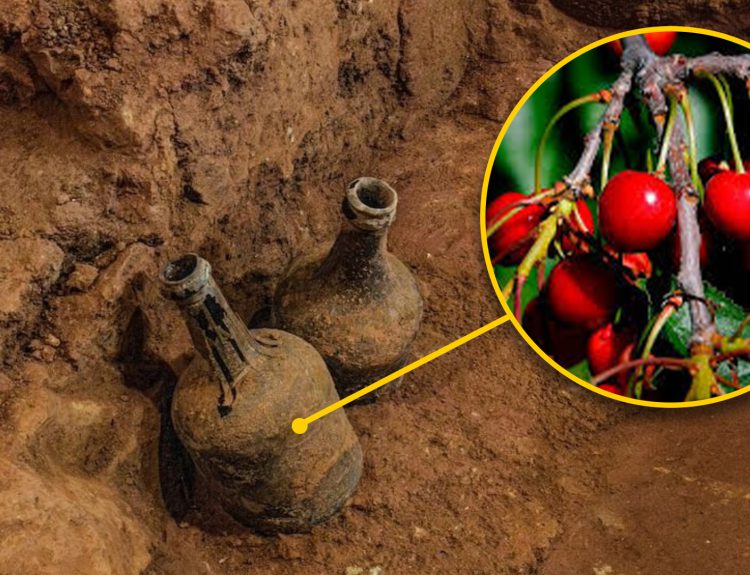During World War I, German U-boat submarines terrorized the waters in an effort to undermine naval supply lines and attack Allied ships. One victim of a torpedo fired from a German U-boat was the USS Jacob Jones which sank off the coast of Great Britain, sending 64 men to their watery grave.
Just weeks ago, British divers recovered the ship’s bell from the USS Jacob Jones after 107 years under water. Plans are underway to return the bell to the United States where it will be preserved by the underwater archaeology lab at the Washington Navy Yard.
The USS Jacob Jones, a Tucker-Class Destroyer
The USS Jacob Jones, which was named in honor of Commodore Jacob Nicholas Jones, a U.S. naval officer who served in several wars, including the War of 1812, was constructed in August 1914 and officially launched the following May, before the United States even entered World War I.
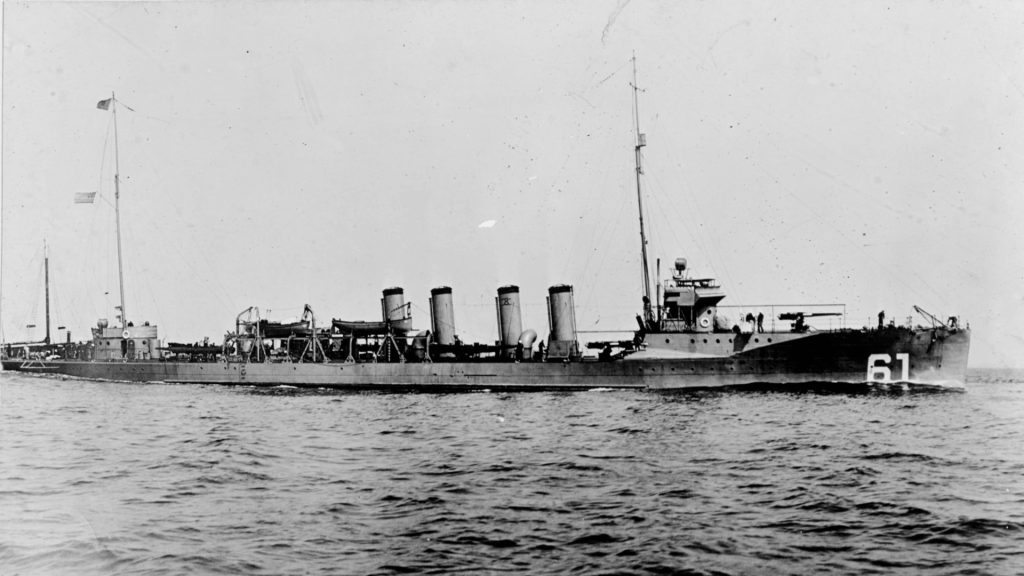
The Tucker-class destroyer was about 315 feet long and equipped with two steam turbine engines. The ship could reach up to 30 knots. It was outfitted with four 4-inch guns, as well as eight torpedo tubes.
The USS Jacob Jones Enters the War
World War I had been going on for nearly two and a half years before the United States entered the war in April 1917. At that time, the USS Jacob Jones and her crew of seven officers and 103 sailors, were sent to the Irish Sea, along with a group of other destroyers.

The USS Jacob Jones was stationed at Queenstown, Ireland, and tasked with patrolling the Irish Seas and escorting supply ships and non-military vessels through the Irish Sea. The German navy had a heavy presence of its U-boat submarines hiding in the Irish Sea.
The USS Jacob Jones to the Rescue!
On a few occasions, the crew of the USS Jacob Jones came to the aid of vessels that had been hit by German torpedoes, rescuing survivors from the water. The most notable of these rescues came on October 19, 1917, when the Orama, a British-owned armed merchant ship, was struck by a U-boat torpedo.

As the Orama took on water, the USS Jacob Jones rushed to the scene. Thanks to the heroic efforts of its crew, the USS Jacob Jones successfully rescued 309 sailors from the doomed Orama.
“Torpedo Ahead“
Early in December 1917, the USS Jacob Jones and five other destroyers from the Queenstown base were assigned to escort a convoy of ships to the French port of Brest. They succeeded in their mission and were making the return trip to Great Britain when things went wrong.
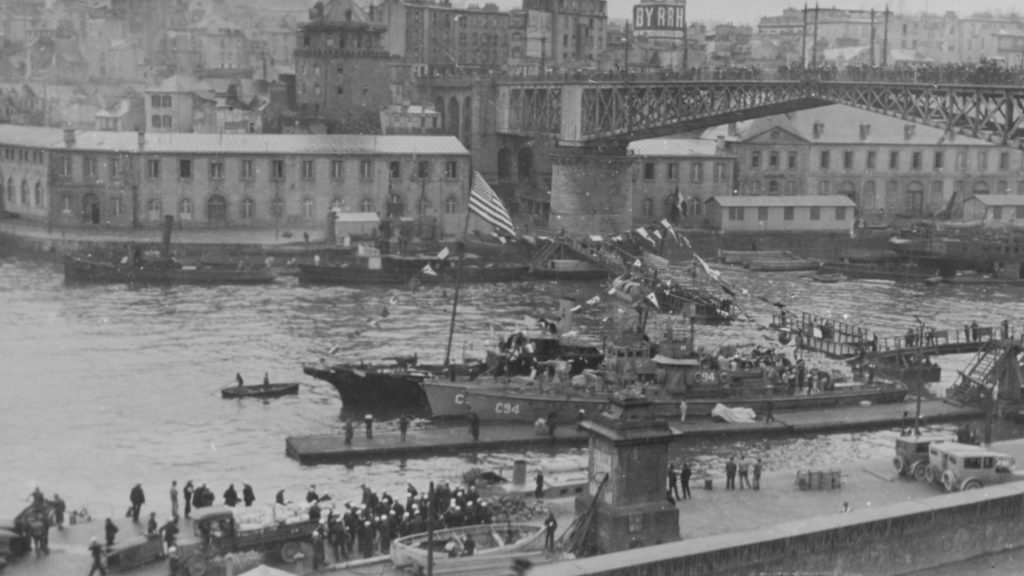
The USS Jacob Jones, the last of the destroyers to leave France, was alone in the waters of the Atlantic Ocean, approximately 25 miles from the southwest coast of Great Britain. Suddenly, one of the lookouts shouted, “Torpedo ahead!”
The German U-53 Submarine
Unbeknownst to the Commander David W. Bagley and the crew of the USS Jacob Jones, a German U-53 submarine, under the command of Hans Rose, had been stalking them for some time. Bagley immediately ordered the crew to make a hard left turn and increase the ship’s speed, but it was too late.
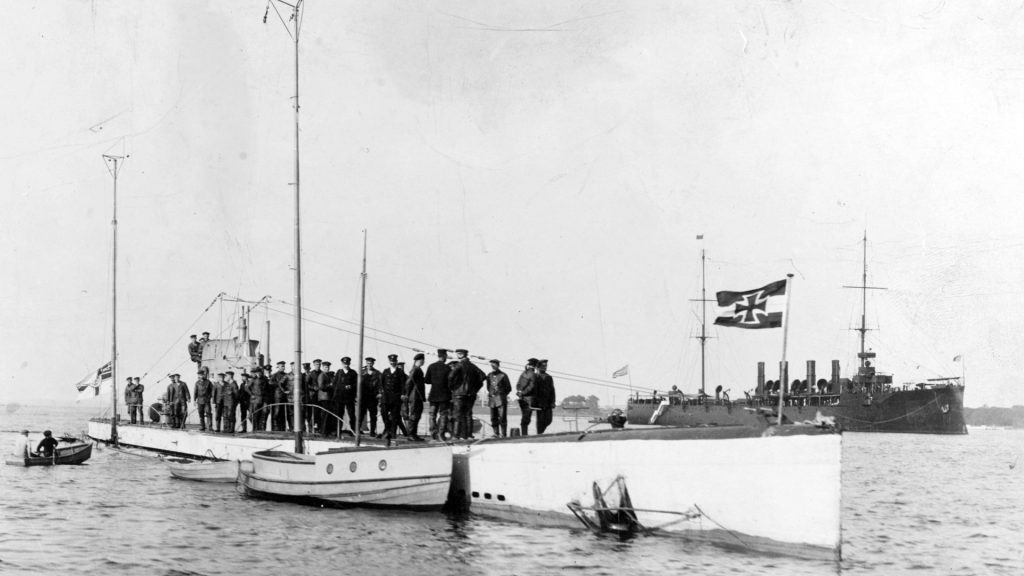
The USS Jacob Jones could not get out of the path of the oncoming torpedo. The torpedo struck the destroyer. Even though the torpedo didn’t explode, it still caused considerable damage to the ship. It also caused the USS Jacob Jones to lose power, so the crew was unable to send a distress call.
Launching the Lifeboats
Under Commander Bagley’s orders, the crew made ready the life rafts and organized an evacuation of the USS Jacob Jones. There was not a minute to lose. The ship was taking on water. It caused the bow of the ship to rise vertically in the air.

It was at this moment that the torpedo’s depth charge exploded. Many of the sailors who were still on board the USS Jacob Jones were killed in the explosion. Others were thrown into the water. Eight minutes after the torpedo struck, the USS Jacob Jones disappeared below the waves.
The First U.S. Destroyer Sunk by the Enemy
Of the 103 sailors and seven officers aboard the USS Jacob Jones, 64 sailors and two officers were killed. The doomed ship has the distinction of being the first U.S destroyer to ever be lost because of enemy action. However, the survivors in the lifeboats still faced imminent danger.

Many of the survivors were injured and the waters of the Atlantic Ocean were icy cold. One of the officers, Lieutenant Stanton F. Kalk, worked to get survivors out of the water and onto lifeboats. He died from hypothermia and exhaustion.
A Benevolent German U-Boat Captain
In the chaos that followed the sinking of the USS Jacob Jones, a few of the survivors reported seeing the German U-boat surface a few miles away and take an injured American sailor on board. In reality, Commander Hans Rose rescued two badly hurt sailors from the USS Jacob Jones.

Commander Rose did one more remarkable thing before he ordered the U-53 out of the area. He radioed the U.S. navy base at Queenstown to report the sinking of the USS Jacob Jones. He gave the ship’s coordinates and requested a rescue effort be launched.
The Survivors Are Rescued
Commander Bagley had no way of knowing that Rose had alerted the base about the incident. He and five others left the lifeboats, now roped together, and paddled for shore in search of help. They were less than six miles away when they were rescued by the HMS Camellia, a British ship.
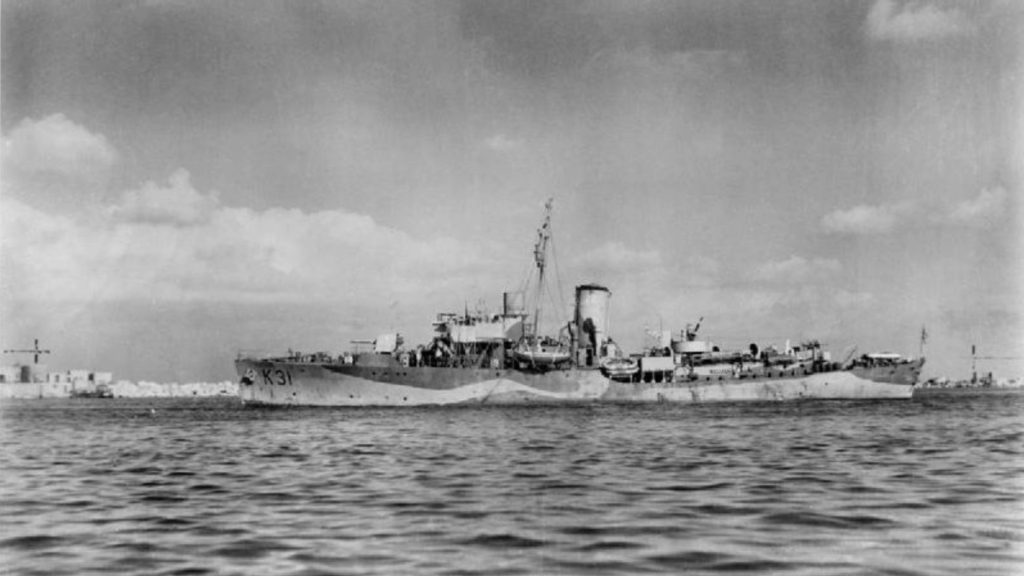
The rest of the survivors of the USS Jacob Jones were picked up a short time later by the Catalina, an American ship. For their heroic deeds in the moments after the torpedo strike, Commander Bagley and others were awarded medals of honor and distinction. Lieutenant Kalk was posthumously awarded the Navy Distinguished Service Medal.
Discovering the Wreck of the USS Jacob Jones
A group of private divers from the British Darkstar technical dive team located the wreckage of the USS Jacob Jones on August 11, 2022. It was found in 377-feet of water. The discovery of the sunken World War I destroyer was celebrated by the divers.
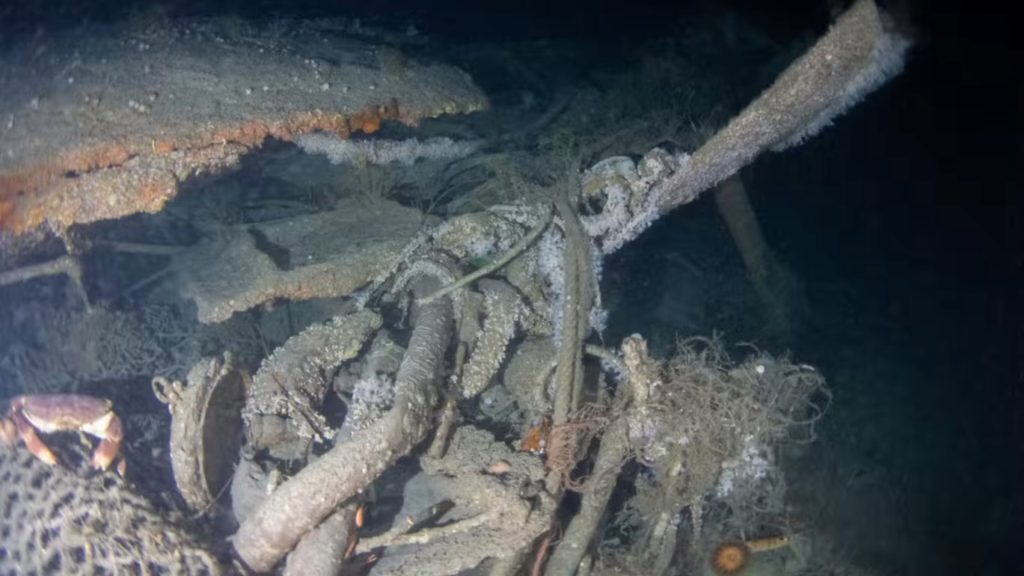
Dom Robinson, one of the divers on the dive team, said, “Finding the USS Jacob Jones was the sort of thing that fills the dreams of most divers.” He added, “We were also acutely aware of the history and how many young sailors died on the wreck. We were pleased that we finally located their resting place.”
Filming and Photographing the Wreck
The divers that discovered the wreck of the USS Jacob Jones documented the discovery by taking underwater photographs and videos of the ship. They recorded several of the artifacts they found, but one particular find caught the attention of the United States Navy.
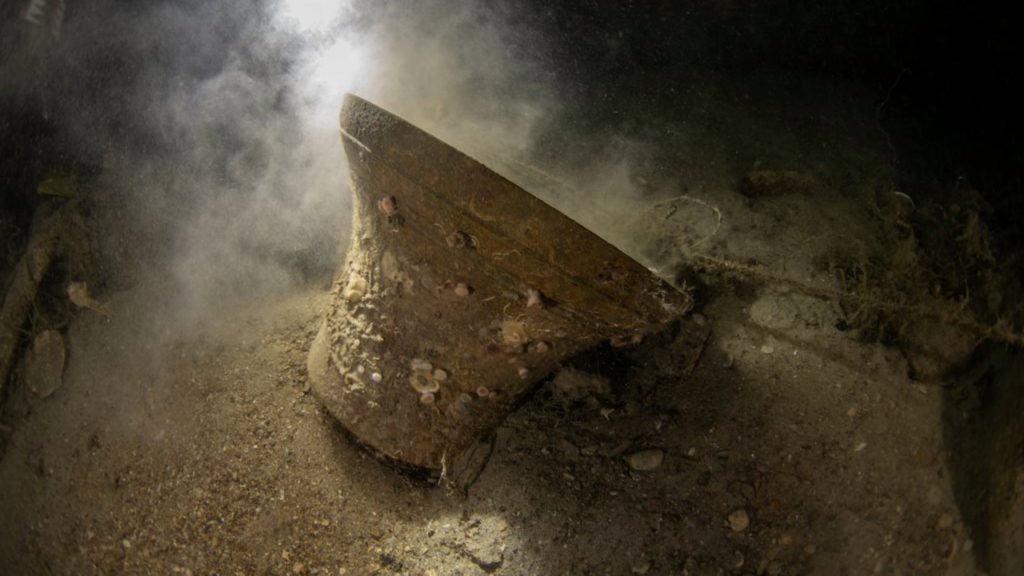
The 80-pound, brass ship’s bell from the destroyer was spotted by the divers. It was lying on its side on the ocean floor. Robinson explained, “We flipped it upright so we could read the name and confirm the identity.”
Concern About Looters
According to Catsambis, after the Darkstar dive team located the wreck of the USS Jacob Jones and reported its location, the U.S. Navy began making plans to investigate the wreck this summer, using their own dive team.
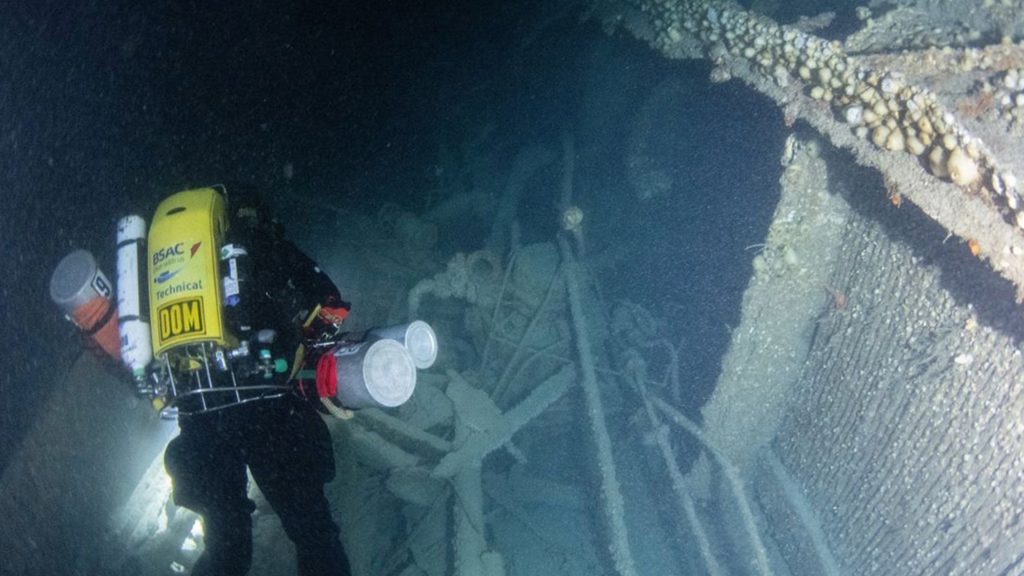
“We wanted to visit the site, document it, and get some good imagery of it, as well as recover the bell,” he said. However, he and Cox were both concerned that the Darkstar divers’ footage garnered so much attention. While Cox praised the divers from Darkstar, he worried that looters would beat them to the wreckage.
Retrieving the Bell
At the request of the United States Navy’s Naval History and Heritage Command, the British Ministry of Defense retrieved the ship’s bell on January 15, 2024. By using a submersible, remote-controlled, robotic salvage vehicle, the Ministry of Defense was able to bring the bell to the surface.
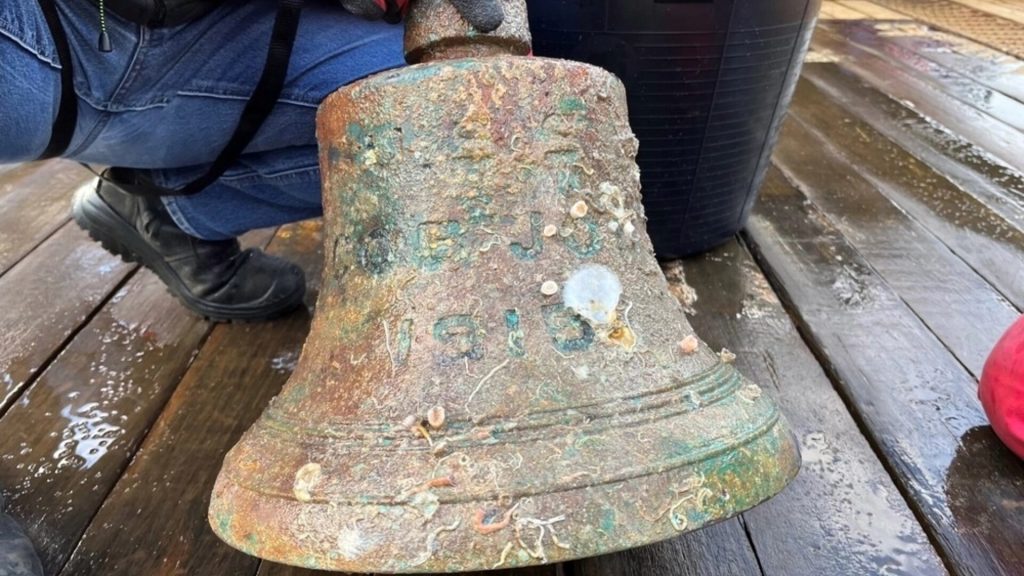
The bell is currently in the custody of Wessex Archaeology but will be returned to the United States in a few months. According to Alexis Catsambis, of the Underwater Archaeology Branch of the Naval History and Heritage Command, “We’ve been told the clapper is still in place.” In fact, the salvage team noted that the bell rang when it was pulled from the water.
“A War Grave“
Retired Rear Admiral Samuel J. Cox serves as the director of the Naval History and Heritage Command. He explained that the Navy’s policy is to leave wreck sites undisturbed. “This ship is a war grave,” he noted. However, an exception was made in the case of the USS Jacob Jones.
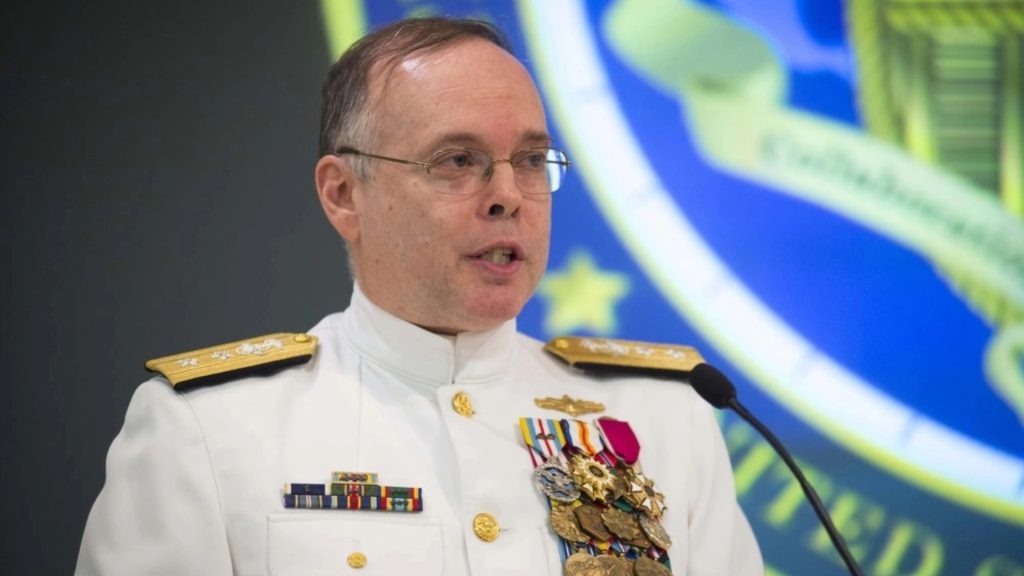
“We didn’t want to take the chance of someone running off with the bell,” he said. “The bell was laying out there and had this kind of ‘take me’ stamped on it.” He added that nearly all of the World War I and World War II-era shipwrecks in the waters around Great Britain have already been stripped clean by looters.
The Bell Will Honor the Sacrifice
Cox continued, “This is an opportunity to remember the sacrifices of those sailors.” He commended the sailors serving on the USS Jacob Jones for their effort to turn the tide of war. Escorting convoys of cargo ships may not seem like a glamorous job, but it was vital to the war effort.
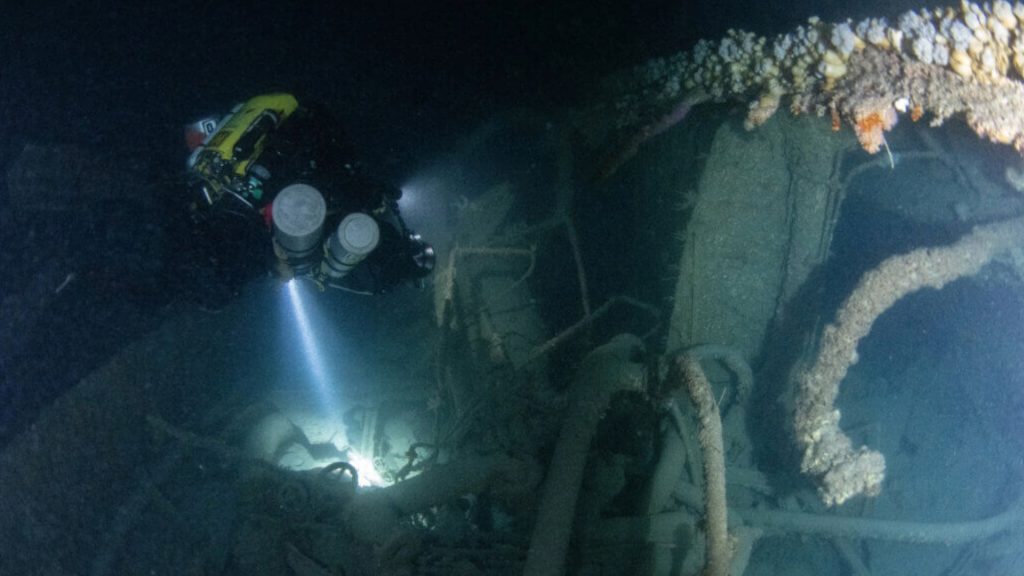
“What they did escorting the convoys is basically what won the war,” Cox said. The Germans set up blockades to cut off supply lines, however the convoys, with their destroyer escorts, were able to keep the troops supplied with food, weapons, and equipment.
Returning the Favor
When Cox and Catsambis learned that the British Ministry of Defense has a new underwater robotic vehicle that they were testing, they realized that there was an opportunity to give the robotic vehicle’s operators some real-world experience … and an opportunity for the British to return a long-overdue favor.
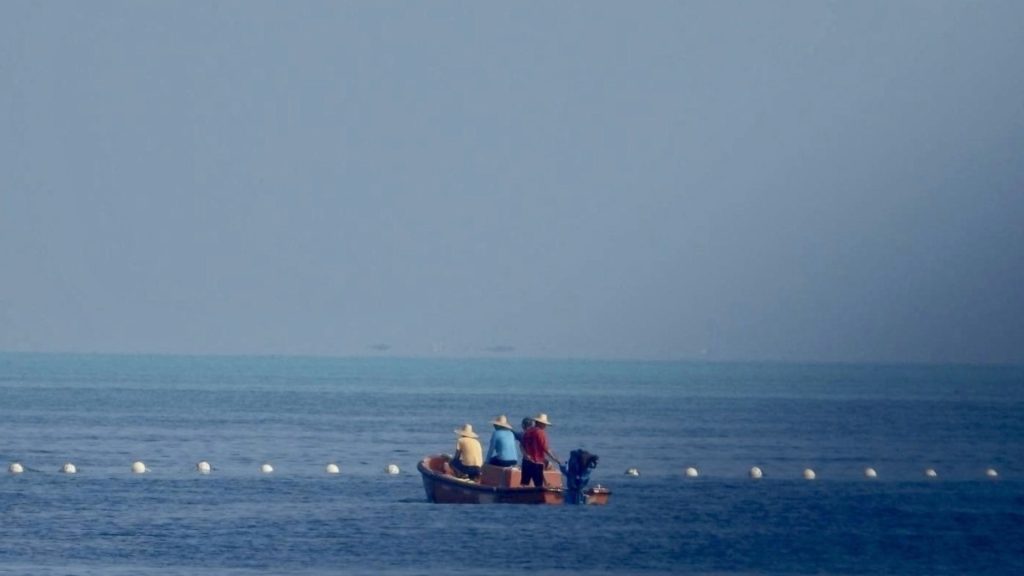
Cox said that the British Ministry of Defense was eager to help retrieve the bell from the USS Jacob Jones. He observed, “I think it is a particularly fitting part of the story, seeing as the Jacob Jones was there doing the same thing one hundred years ago.”
A Final Piece of Irony
After the USS Jacob Jones was lost in a U-boat attack during World War I, the Navy commissioned a second destroyer to be built and named the Jacob Jones, honoring both the lost WWI destroyer and the commander it was named for. The second Jacob Jones was built at the same shipyard as the first one.
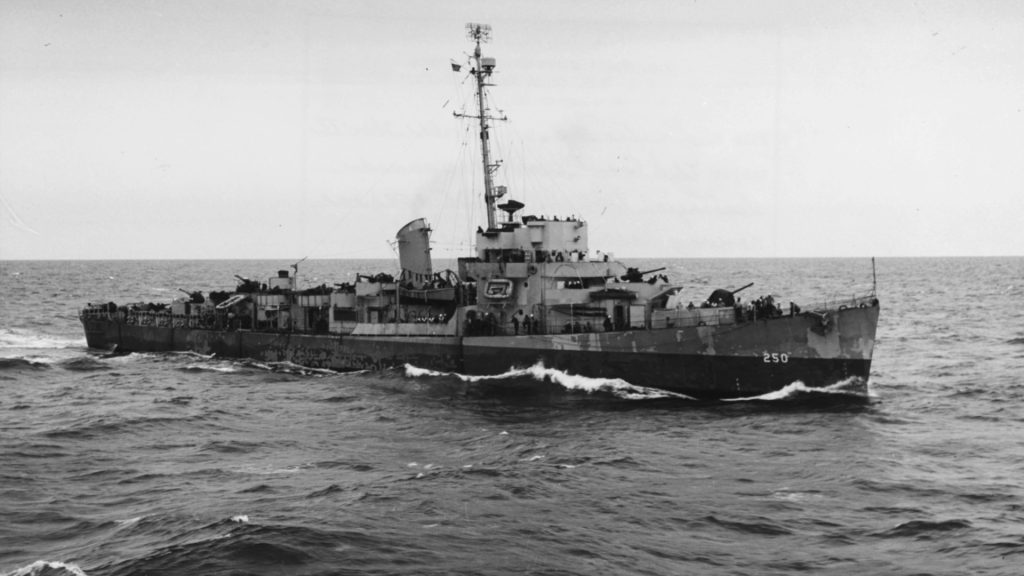
The USS Jacob Jones II was used by the U.S. Navy as an escort vessel during World War II, just as its namesake had done decades earlier. It was patrolling off the coast of Delaware when, on February 28, 1942, it too was hit by a torpedo from a German U-boat and sank.




